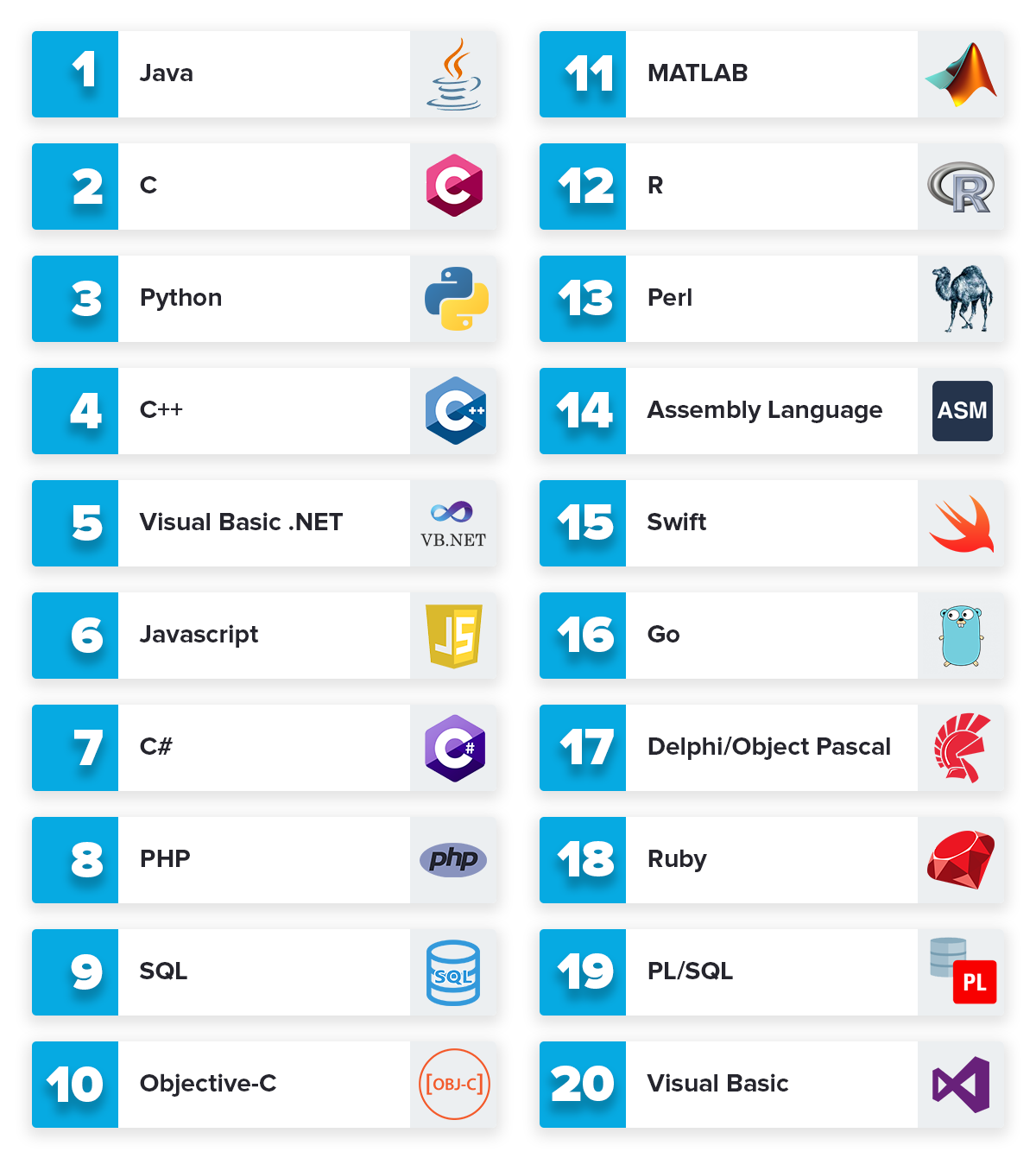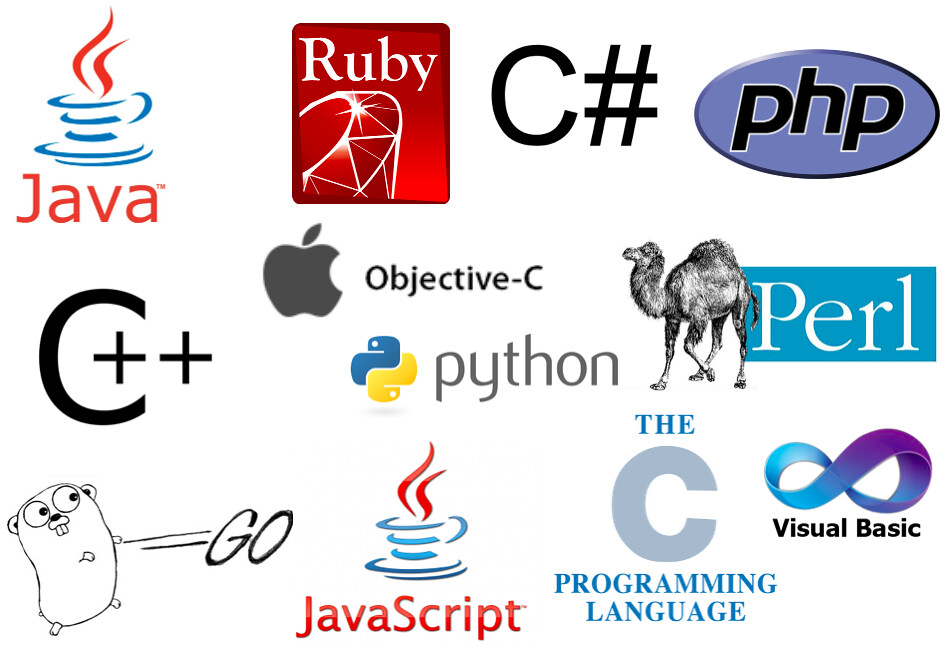

- All programming language list serial#
- All programming language list manual#
Declarative programming stands in contrast to imperative programming via imperative programming languages, where control flow is specified by serial orders (imperatives). Main category: Declarative programming languagesĭeclarative languages express the logic of a computation without describing its control flow in detail. Examples of curly-bracket languages include: Many curly-bracket languages descend from or are strongly influenced by C. This syntax originated with BCPL (1966), and was popularized by C.
XProc – XML processing language, enabling concurrencyĬurly-bracket or curly-brace programming languages have a syntax that defines statement blocks using the curly bracket or brace characters. SequenceL – purely functional, automatically parallelizing and race-free. Scala – implements Erlang-style actors on the JVM. Python - uses thread-based parallelism and process-based parallelism. Pict – essentially an executable implementation of Milner's π-calculus. Oz – multiparadigm language, supports shared-state and message-passing concurrency, and futures, and Mozart Programming System cross-platform Oz. occam-π – a modern variant of occam, which incorporates ideas from Milner's π-calculus. occam – influenced heavily by Communicating Sequential Processes (CSP).  MultiLisp – Scheme variant extended to support parallelism. Limbo – relative of Alef, used for systems programming in Inferno (operating system). Joule – dataflow language, communicates by message passing. Join Java – concurrent language based on Java. Haskell - supports concurrent, distributed, and parallel programming across multiple machines. Gambit Scheme - using the Termite library. Erlang – uses asynchronous message passing with nothing shared. Eiffel (through the SCOOP mechanism, Simple Concurrent Object-Oriented Computation). E – uses promises, ensures deadlocks cannot occur. Clojure – a dialect of Lisp for the Java virtual machine. Cω – C Omega, a research language extending C#, uses asynchronous communication. ChucK – domain specific programming language for audio, precise control over concurrency and timing. Provides a message based parallel-first concurrency model. Ballerina - a language designed for implementing and orchestrating micro-services. Ateji PX an extension of the Java language for parallelism. Alef – concurrent language with threads and message passing, used for systems programming in early versions of Plan 9 from Bell Labs. Visual Basic (use Common Intermediate Language (CIL) that is JIT compiled into a native runtime). Vala (compiler for the GObject type system). Smalltalk compiles to platform independent bytecode for a Virtual Machine. Simula (first object-oriented language, a superset of ALGOL 60). SequenceL – purely functional, parallelizing and race-free. Python (compiles to intermediate VM bytecode). PL/I (general purpose language, originally for IBM mainframes). Nemerle (compiled into intermediate language bytecode). Kotlin (Kotlin/Native uses LLVM to produce native binaries). Julia (Compiled on the fly to machine code). Java (usually compiled into JVM bytecode ahead-of-time (AOT) compilers compile to machine code). Fortran (the first high-level, compiled language, from IBM's John Backus). F# (compiled into CIL, to generate runtime image). Eiffel (object-oriented language developed by Bertrand Meyer). DIBOL (Digital Interactive Business Oriented Language). Delphi ( Borland's Object Pascal development system). DASL compiles into Java, JavaScript, JSP, Flex, etc. CLEO (Clear Language for Expressing Orders) on Leo computers.
MultiLisp – Scheme variant extended to support parallelism. Limbo – relative of Alef, used for systems programming in Inferno (operating system). Joule – dataflow language, communicates by message passing. Join Java – concurrent language based on Java. Haskell - supports concurrent, distributed, and parallel programming across multiple machines. Gambit Scheme - using the Termite library. Erlang – uses asynchronous message passing with nothing shared. Eiffel (through the SCOOP mechanism, Simple Concurrent Object-Oriented Computation). E – uses promises, ensures deadlocks cannot occur. Clojure – a dialect of Lisp for the Java virtual machine. Cω – C Omega, a research language extending C#, uses asynchronous communication. ChucK – domain specific programming language for audio, precise control over concurrency and timing. Provides a message based parallel-first concurrency model. Ballerina - a language designed for implementing and orchestrating micro-services. Ateji PX an extension of the Java language for parallelism. Alef – concurrent language with threads and message passing, used for systems programming in early versions of Plan 9 from Bell Labs. Visual Basic (use Common Intermediate Language (CIL) that is JIT compiled into a native runtime). Vala (compiler for the GObject type system). Smalltalk compiles to platform independent bytecode for a Virtual Machine. Simula (first object-oriented language, a superset of ALGOL 60). SequenceL – purely functional, parallelizing and race-free. Python (compiles to intermediate VM bytecode). PL/I (general purpose language, originally for IBM mainframes). Nemerle (compiled into intermediate language bytecode). Kotlin (Kotlin/Native uses LLVM to produce native binaries). Julia (Compiled on the fly to machine code). Java (usually compiled into JVM bytecode ahead-of-time (AOT) compilers compile to machine code). Fortran (the first high-level, compiled language, from IBM's John Backus). F# (compiled into CIL, to generate runtime image). Eiffel (object-oriented language developed by Bertrand Meyer). DIBOL (Digital Interactive Business Oriented Language). Delphi ( Borland's Object Pascal development system). DASL compiles into Java, JavaScript, JSP, Flex, etc. CLEO (Clear Language for Expressing Orders) on Leo computers.  CLIPPER 5.3 (programming Language for DOS-based software). C# (compiled into CIL, generates a native image at runtime). C++ (widely used multiparadigm language derived from C). C (one of the most widely used procedural languages). BASIC (some dialects, including the first version of Dartmouth BASIC). Ballerina (compiled to bytecode for Ballerina Runtime (BVM)). ALGOL 60 (very influential language design). 35 Object-oriented prototype-based languages. 34 Object-oriented class-based languages. 29.1 Textual substitution macro languages. 24.5 Languages with automatic reference counting (ARC). 24.4 Languages with deterministic memory management.
CLIPPER 5.3 (programming Language for DOS-based software). C# (compiled into CIL, generates a native image at runtime). C++ (widely used multiparadigm language derived from C). C (one of the most widely used procedural languages). BASIC (some dialects, including the first version of Dartmouth BASIC). Ballerina (compiled to bytecode for Ballerina Runtime (BVM)). ALGOL 60 (very influential language design). 35 Object-oriented prototype-based languages. 34 Object-oriented class-based languages. 29.1 Textual substitution macro languages. 24.5 Languages with automatic reference counting (ARC). 24.4 Languages with deterministic memory management. All programming language list manual#
24.3 Languages with optional manual memory management. 24.2 Languages with manual memory management.







 0 kommentar(er)
0 kommentar(er)
